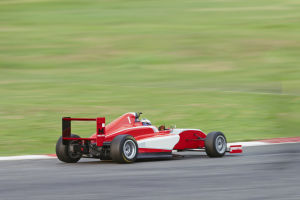When it comes to the concept of automotive aerodynamics, for most people, it's a bewildering topic. However, everyone's confusion is completely understandable. Because the term "automotive aerodynamics" falls within the realm of automotive development.
With the continuous upgrade and iteration of the automotive industry, the integration of automobiles and aerodynamics has become increasingly close, delving deeper into their story.
Automotive aerodynamics is a branch of aerodynamics, that studies the relationship and motion laws between automobiles and the surrounding air when they are in relative motion, belonging to an important part of fluid mechanics. It mainly investigates the aerodynamic performance, driving stability, handling, and aerodynamic noise of vehicles such as cars and trains.
Aerodynamics is a branch of mechanics that primarily studies the force characteristics of objects in relative motion with gas, the laws of gas flow, and the accompanying physical changes.
Secondly, it is also an important category of fluid mechanics. Although the definition of aerodynamics is abstract, its principles are ubiquitous around us. From airplanes and various aircraft to paper airplanes we fold by hand, shuttlecocks, and even ancient feathered arrows, they all involve aerodynamics.
Simply put, automotive aerodynamics mainly addresses two issues. One is to reduce the drag on the car during driving, thereby making the vehicle more fuel-efficient; the other is to increase the downforce on the car during driving, making it run more steadily.
For this contradictory problem, there are always people wracking their brains to solve it. Let's see how the king of motorsports - Formula 1 - tackles it.
As the top product in the automotive manufacturing industry, Formula 1 pushes humanity's pursuit of speed to the limit. Under the pursuit of speed as king, any Formula 1 car can be considered an ultimate and pure speed machine! Behind it lies the extreme application of aerodynamics, with various aerodynamic kits such as front lips, rear diffusers, side skirts, and adjustable angle rear wings.
With the assistance of these kits, Formula 1 cars can run faster and more steadily at high speeds. Besides the typical Formula 1 car, aerodynamic theory remains crucial in performance cars and even supercars.
Speaking of automotive aerodynamics theory, the concept of drag coefficient must be mentioned. The drag coefficient is calculated using wind tunnel tests on objects. Through the drag coefficient, the aerodynamic drag of a car during driving can be calculated. A smaller product of the drag coefficient and the frontal area indicates better aerodynamic performance of the car.
According to relevant data, for every 10% decrease in the drag coefficient of a car, its fuel efficiency can increase by about 7%. When the actual speed of a vehicle exceeds 200 km/h, the aerodynamic drag accounts for over 85% of all resistance. Therefore, car models with larger drag coefficients not only reduce the vehicle's speed but also increase fuel consumption. These data are particularly important for developing supercars.
So, what benefits can we gain from utilizing automotive aerodynamics?
There are three benefits: firstly, the car can be firmly "pressed" onto the road during high-speed driving, making it more stable and safer. Secondly, it makes the car more fuel-efficient. Thirdly, it can efficiently dissipate heat for the engine and braking system. In conclusion, mastering automotive aerodynamics undoubtedly brings many benefits.


